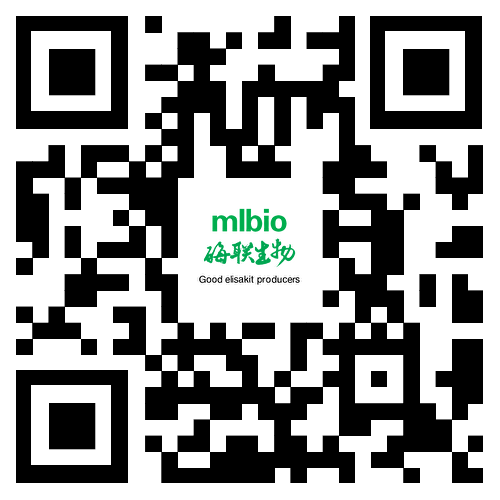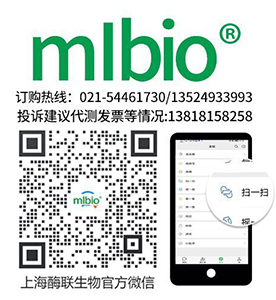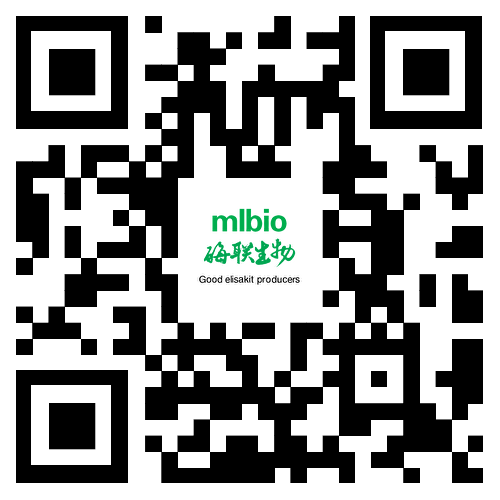產(chǎn)品貨號 : mlR5457
英文名稱 : phospho-IFNAR1 (Ser535+Ser539)
中文名稱 : 磷酸化干擾素α受體抗體
別 名 : IFNAR1 (phospho S535 + S539); p-IFNAR1 (phospho S535 + S539); IFN alpha REC; IFN alpha receptor; IFN alpha/beta Receptor alpha; IFN beta receptor; IFNAR; IFNAR1; IFRC; Interferon alpha/beta receptor alpha chain; INAR1_HUMAN.
產(chǎn)品類型 : 磷酸化抗體
研究領(lǐng)域 : 腫瘤 細(xì)胞生物 免疫學(xué) 信號轉(zhuǎn)導(dǎo) 細(xì)胞凋亡 轉(zhuǎn)錄調(diào)節(jié)因子
抗體來源 : Rabbit
克隆類型 : Polyclonal
交叉反應(yīng) : Human, Mouse, Rat, Dog, Pig, Cow, Horse, Sheep, Guinea Pig,
產(chǎn)品應(yīng)用 : ELISA=1:500-1000 IHC-P=1:400-800 IHC-F=1:400-800 Flow-Cyt=0.2ug/tets IF=1:100-500 (石蠟切片需做抗原修復(fù))
not yet tested in other applications.
optimal dilutions/concentrations should be determined by the end user.
分 子 量 : 61kDa
細(xì)胞定位 : 細(xì)胞膜
性 狀 : Lyophilized or Liquid
濃 度 : 1mg/ml
免 疫 原 : KLH conjugated Synthesised phosphopeptide derived from human IFNAR1 around the phosphorylation site of Ser535+Ser539:QD(p-S)GNY(p-S)NE
亞 型 : IgG
純化方法 : affinity purified by Protein A
儲 存 液 : 0.01M TBS(pH7.4) with 1% BSA, 0.03% Proclin300 and 50% Glycerol.
保存條件 : Store at -20 °C for one year. Avoid repeated freeze/thaw cycles. The lyophilized antibody is stable at room temperature for at least one month and for greater than a year when kept at -20°C. When reconstituted in sterile pH 7.4 0.01M PBS or diluent of antibody the antibody is stable for at least two weeks at 2-4 °C.
PubMed : PubMed
產(chǎn)品介紹background:
IFNAR1 is a member of the cytokine receptor superfamily which also includes receptors for interleukins, IFN gamma, ciliary neurotrophic factor, somatotrophin, erythropoietin, nerve growth factor, tumor necrosis factor, leukemia inhibitory factor, and oncostatin M. Some members of the family have an alpha chain with either low or high ligand binding affinity and at least one beta chain involved in signal transduction with either relatively low or no ligand binding affinity. Type I interferons, alpha and beta, induce a variety of effects on target cells including antiviral, antiproliferative, and immunomodulatory activities. The alpha and beta interferons compete to bind to a common cell surface receptor, while IFN gamma binds to a distinct receptor. IFNAR1 is very responsive to type I interferons and bind to IFN beta and IFN alpha subtypes. It is also functionally involved in signal transduction because of its association with the cytoplasmic tyrosine kinase JAK1. The type I interferons, alpha and beta, are produced by leukocytes (alpha subunits), fibroblasts (beta subtypes), lymphocytes (omega subtypes), and ruminant embryos (tau subtypes). Interferon receptors are generally found on most human cell types whatever their origin, even on cells poorly responsive to interferon. IFNAR1 is expressed on the cell surface in a variety of human cell lines.
Function:
Associates with IFNAR2 to form the type I interferon receptor. Receptor for interferons alpha and beta. Binding to type I IFNs triggers tyrosine phosphorylation of a number of proteins including JAKs, TYK2, STAT proteins and IFNR alpha- and beta-subunits themselves.
Subunit:
Belongs to the type II cytokine receptor family. Contains 3 fibronectin type-III domains.
Subcellular Location:
Membrane.
Tissue Specificity:
IFN receptors are present in all tissues and even on the surface of most IFN-resistant cells. Isoform 1, isoform 2 and isoform 3 are expressed in the IFN-alpha sensitive myeloma cell line U266S. Isoform 2 and isoform 3 are expressed in the IFN-alpha resistant myeloma cell line U266R. Isoform 1 is not expressed in IFN-alpha resistant myeloma cell line U266R.
Post-translational modifications:
Phosphorylated on tyrosine residues by TYK2 tyrosine kinase.
Palmitoylation at Cys-463 is required for the activation of STAT1 and STAT2.
SWISS:
P17181
Gene ID:
3454
Important Note:
This product as supplied is intended for research use only, not for use in human, therapeutic or diagnostic applications.
產(chǎn)品圖片












